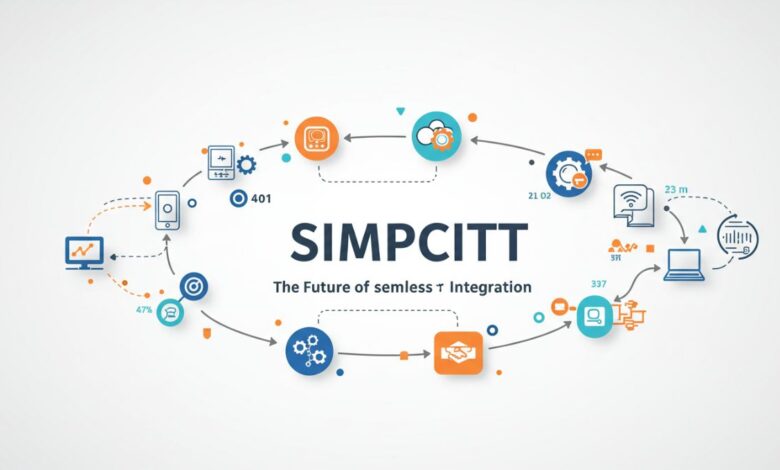Simpcitt: The Future of Seamless System Integration
An in-depth look at how simpcitt enhances efficiency, connects systems, and drives innovation across industries

In the ever-evolving landscape of technology and digital solutions, simpcitt has emerged as a concept worth exploring. While still relatively new, it represents a methodology or platform designed to streamline processes, improve efficiency, and bridge gaps between different systems. Its growing popularity stems from its adaptability across industries, from manufacturing to services, and its potential to redefine how organizations manage their operations.
The appeal of simpcitt lies in its balance between simplicity and sophistication. It offers powerful tools for handling complex workflows while maintaining an interface and structure that even non-technical users can understand.
How Simpcitt Works
At its core, simpcitt integrates existing systems into a unified environment. Rather than replacing current tools, it connects them in a way that allows seamless communication. This prevents duplication of effort, eliminates manual data transfers, and ensures all stakeholders have access to the same accurate information.
The architecture of simpcitt is often modular, meaning businesses can start with core functions and later add specialized components. This flexibility ensures the platform grows with the organization’s needs. It can operate on-premises, in the cloud, or in hybrid environments, making it accessible to businesses of all sizes.
Key Components of Simpcitt
-
Integration Layer – Handles connectivity between different software systems.
-
Automation Engine – Manages repetitive tasks without manual intervention.
-
Data Processing Core – Cleans, validates, and organizes data for better decision-making.
-
Security Framework – Protects data through encryption, access control, and monitoring.
-
Analytics Module – Delivers insights on performance, trends, and opportunities.
Benefits of Implementing Simpcitt
Adopting simpcitt can deliver a range of advantages:
-
Operational Efficiency – Automates processes, reducing time and resource waste.
-
Error Reduction – Ensures data accuracy by eliminating manual re-entry.
-
Scalability – Adapts to the growing demands of a business without major overhauls.
-
Improved Collaboration – Keeps departments synchronized with real-time updates.
-
Cost Savings – Streamlines operations, reducing labor costs and minimizing downtime.
The long-term impact of simpcitt often extends beyond operational improvements, contributing to stronger customer satisfaction and competitive advantage.
Applications of Simpcitt Across Industries
-
Healthcare – Enables fast, secure exchange of patient information between providers.
-
Retail – Updates inventory across multiple locations instantly.
-
Finance – Processes transactions efficiently while maintaining compliance.
-
Logistics – Coordinates shipments and tracks goods in real time.
-
Education – Streamlines administrative processes and data management for institutions.
Regardless of sector, the goal is the same: optimize processes through seamless integration and automation.
Challenges and Limitations of Simpcitt
While promising, simpcitt adoption is not without its hurdles:
-
Initial Costs – Setup and customization require investment.
-
Compatibility Issues – Older systems may need extra adjustments.
-
Training Requirements – Staff must understand how to use new tools effectively.
-
Security Considerations – Any connected system must have strong safeguards in place.
Organizations need to weigh these factors and plan carefully before deployment.
Best Practices for Implementing Simpcitt
-
Start with a Clear Goal – Define what problems you want simpcitt to solve.
-
Pilot Before Scaling – Test in one department to refine the setup.
-
Invest in Training – Equip staff with the skills needed to operate the system.
-
Prioritize Security – Maintain updated protections against breaches.
-
Review Performance Regularly – Monitor KPIs to ensure it meets business objectives.
The Future of Simpcitt
As industries become more interconnected, simpcitt will likely evolve with smarter automation, predictive analytics, and even AI integration. These advancements could help organizations anticipate challenges, optimize workflows in real time, and deliver more personalized services to customers.
We may also see increased accessibility, with smaller businesses able to adopt simpcitt through cloud-based subscription models. This democratization of technology will allow even startups to compete with larger corporations in operational efficiency.
Conclusion
Simpcitt is more than just a tool—it’s a strategic enabler for organizations seeking greater efficiency, accuracy, and collaboration. By integrating systems, automating workflows, and delivering actionable insights, it addresses many of the pain points businesses face in the digital era.
While challenges exist, the benefits often outweigh the drawbacks for companies willing to invest in proper planning, training, and security. With the right approach, simpcitt can become a cornerstone of operational excellence and long-term success.




